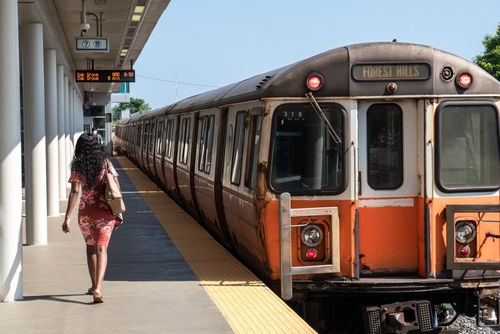
Massachusetts Gov. Maura Healey joined Lt. Gov. Kim Driscoll and other officials to celebrate the elimination of slow zones on the Massachusetts Bay Transportation Authority’s (MBTA) Orange Line Friday.
Healey and Driscoll stood alongside Transportation Secretary Monica Tibbits-Nutt and MBTA General Manager Phillip Eng at the Haymarket station to celebrate the first time the line was free of speed restrictions in nearly 15 years.
“General Manager Eng and his team came in with a promise to remove speed restrictions this year – and they are delivering. For the first time in 15 years, the Orange Line is completely free of slow zones, resulting in faster, more reliable service for tens of thousands of riders. And they’re on track to lift all remaining slow zones across the system in the coming weeks,” Healey said. “This work gives riders back time in their day to spend with friends and family, be less rushed at breakfast or dinner, or take the dog for another walk before it gets dark at 4:30 PM. It’s also good for our economy, making sure people can get to work on time and delivering on our promise to have a world class public transportation system.”
Officials said the line had been under speed restrictions since 2010. Now, slow zones affect less than 1 percent of the entire subway system, compared to a year ago when they were affecting nearly 26 percent of the system over 35 miles of track. As of Friday, the Orange Line was operating an estimated 18 minutes faster roundtrip that it was on Sept. 1, 2023.
“Our riders deserve safe, reliable, and more frequent service, and last year, we made a commitment to deliver that,” Eng said. “With strong support and leadership from Governor Healey’s Administration, we have been rebuilding our workforce so they can rebuild our infrastructure. With the Orange Line now restriction-free for the first time in 15 years and the MBTA at the goal line to make the entire subway system restriction-free, we have increased the number of trains, decreased wait times, and reduced travel time for our riders across our heavy and light rail lines.”